5 data-backed DE&I initiatives that work
A report from Culture Amp shows how DE&I work affects the employee experience. Here’s what they found that moved the needle.

In response to the movement for racial justice in the summer of 2020, organizations committed to advancing diversity, equity and inclusion efforts, but have those generated actual change?
Culture Amp’s “2022 Workplace DEI Report: Understanding the DEI Landscape” compares what HR and DE&I professionals are doing with how employees feel about the actions.
In the “Understanding the DEI landscape” survey, 85% of HR and DE&I practitioners agree their organizations are building a diverse and inclusive culture. Yet only 34% of respondents say they have sufficient resources to support this work and 27% say they know how to measure the effectiveness of its DE&I initiatives.

Given that resource squeeze, here are some of the most effective strategies and tactics to consider to make the most of your time and budget.
1. Document your DE&I policy
Formalizing organizational policies is a starting point for any HR strategy, the report says. And the majority of respondents indicate their organizations have an anti-harassment policy (95%), a code of conduct (93%) and an anti-discrimination policy (92%).
However, only 41% of respondents say their company has a formal DE&I policy. Even among those who do, only 42% respondents said there is an explicit, documented process in place to enforce the policy, suggesting 58% have a DE&I policy in name alone.
With a process in effect behind a DE&I policy, employees can demonstrably see that an organization prioritizes having a diverse workforce.
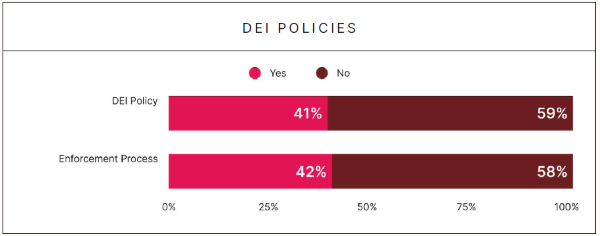
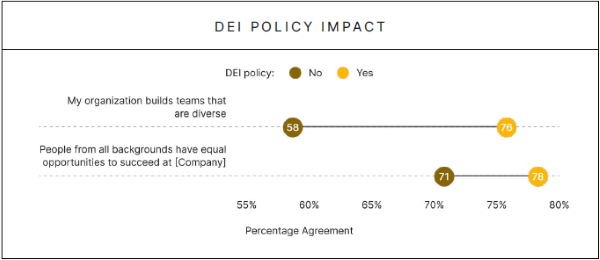
Impact: Employee perception is much more favorable on both building diverse teams and equal opportunities for all people when there is a clear DE&I policy in place.
2. Strategic support
The survey found that 49% of respondents whose organizations have a strategic diversity plan but 56% said they have a formal DE&I council, forum or committee. The report asks: “If 7% of respondents have a DEI council operating without a plan in place, what exactly are they doing and how effective is it?”
To ensure councils/forums/committees are not operating without a plan, create specific roles, responsibilities and accountabilities within them that advance DE&I.


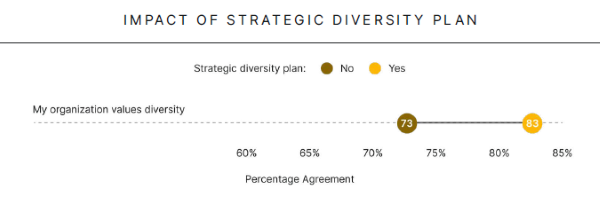
Impact: Having a strategic diversity plan can help build a more representative workforce, so it makes sense that respondents at organizations with one perceive diversity is more highly valued. And the data shows that organizations with a DE&I council, forum or committee score more favorably on statements related to fair access and growth. They help create the space for more targeted discussions and investments around ensuring equitable opportunities for employees.
3. Training
Some form of DE&I training is offered at 60% of companies, according to respondents, and generally the training was made available to employees of all levels of the organization. Respondents indicated that the two most common types of training offered within their organization are unconscious bias training (54%) and a general DE&I training (60%).
While training sessions can be a positive step, pairing them with an ongoing inclusive curriculum can further the learning and development process.
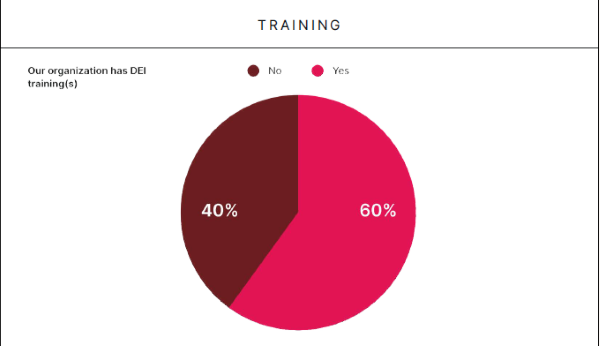
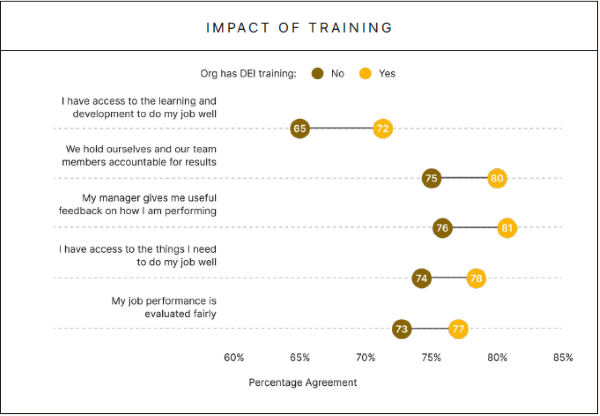
Impact: Employees working at companies which offer DE&I training rate are more positive abouttheir opportunities for growth with heightened team accountability and useful manager feedback. A needs analysis, the report suggests, could be effective to determine what training is required and the target audience within the organizations.
4. Employee Resource Groups
Of the 48% of respondents who report their organization has an ERG, half said the groups focus primarily on employee experience, and 36% said they focus evenly on business goals and employee experience. The three most common ERGs — and three is the average number of ERGs per organization — reported by 140 organizations are:
- Members of racial/ethnic minority groups – 74%
- Women – 70%
- Members of the LGBTQ+ community – 69%
The Culture Amp report says, “This relationship reinforces the importance of collecting data, because if you don’t know who your employees are, you can’t identify the individuals or groups who need additional community or support.”
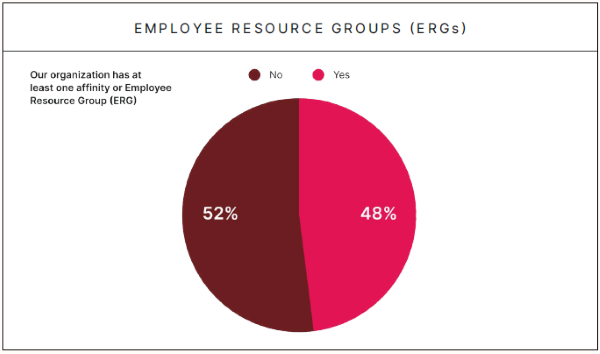

Impact: At organizations with at least one ERG, employees indicated higher agreement of feeling their perspectives were included in decision-making, making a positive impact and being respected at work. All of these contribute to feelings of belonging and being valued at work. The report also suggests ERGs may help managers better understand the needs of their direct reports, who may have different backgrounds.
5. Events
While more than half of respondents indicate their organization has DE&I-related events for employees, the report did not dig into the types of events being offered. Events can be an important way of recognizing, celebrating and creating dialogue around different cultural backgrounds, but don’t necessarily address systemic DE&I issues.
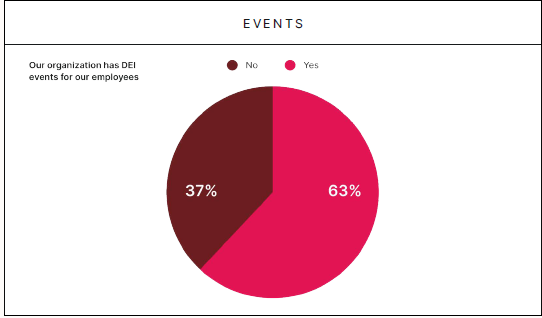
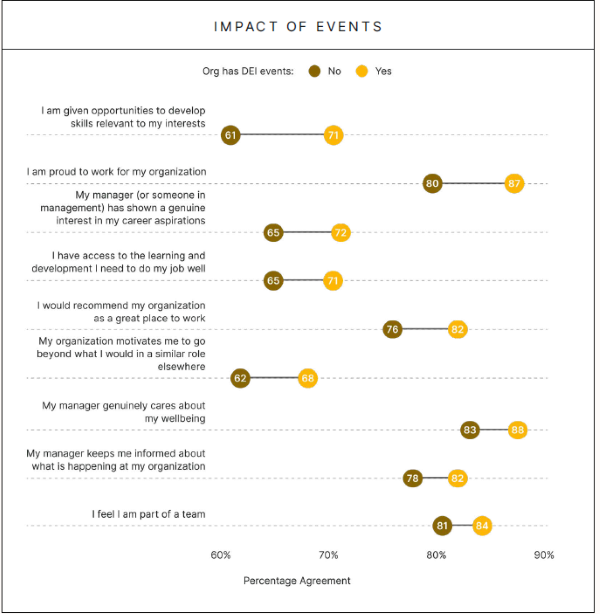
Impact: DE&I events have an impact on employees at organizations who offer them in terms of improved outcomes in:
- Motivation
- Access to opportunities
- Organizational pride
- Belonging
- Manager relationship
One explanation for the impact, the report says, is that DE&I events are often widely publicized internally and thus can raise employee expectations around such issues being taken seriously.
Prioritizing initiatives may be the hardest part of an effective DE&I strategy and program — especially when resources are limited — but understanding what actions can help lead to progress provides a place to start. The report closes with the recommendation that that companies use “this data in conjunction with a thoughtful employee listening strategy that enables them to gain a deep understanding of their employees’ unique experiences.”

